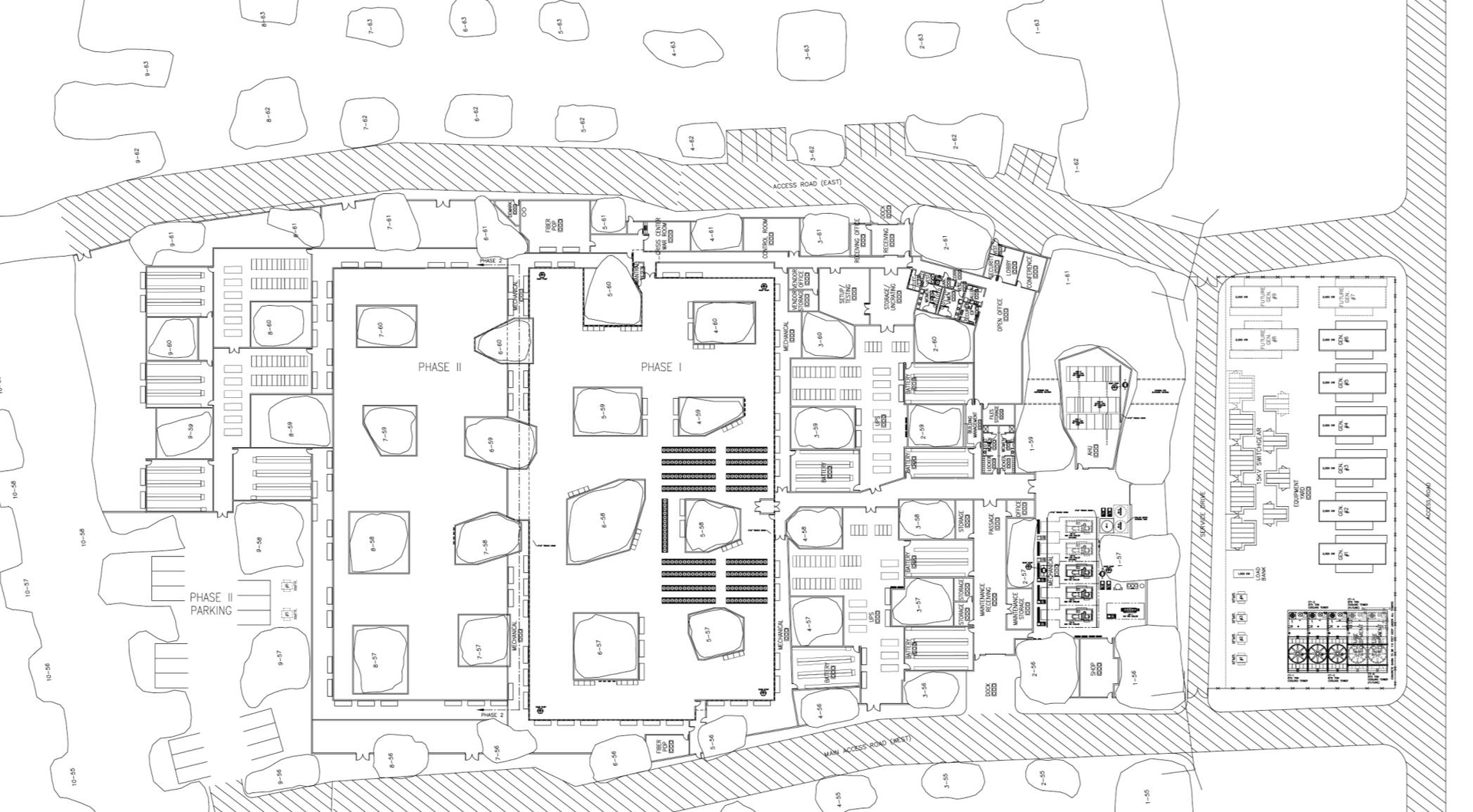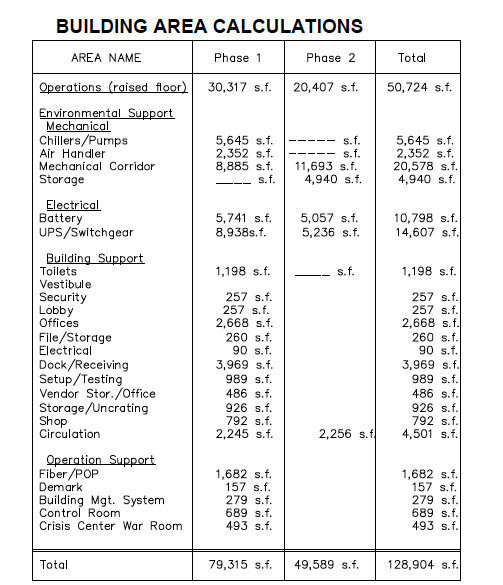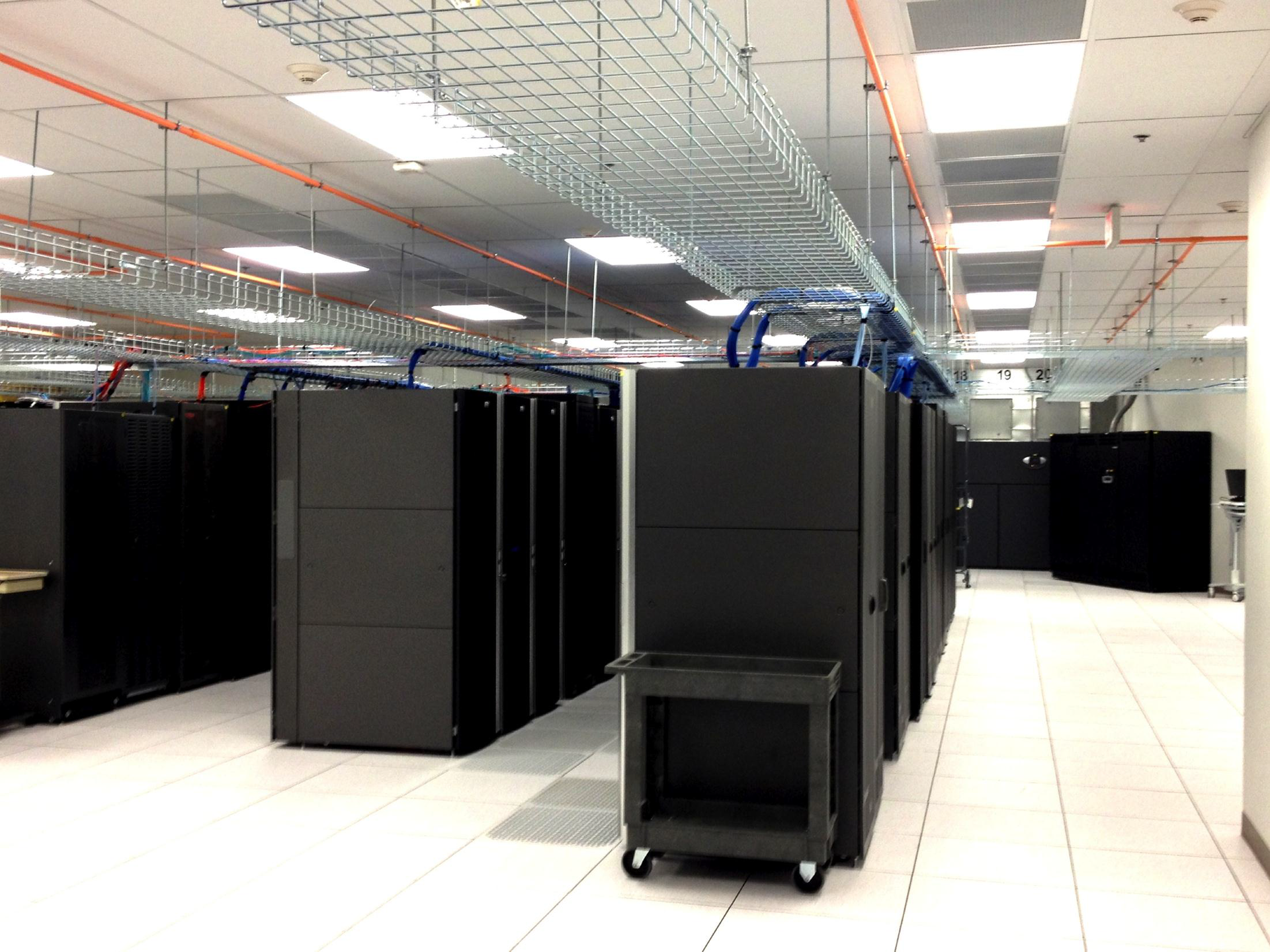IT cave in the USA
More than 23 meters underground in the city of Lenexa, Kansas, is the data center of Cavern Technologies. This provider is one of those companies that offer their customers an unprecedented level of security. More recently, Cavern Technologies doubled the size of its underground data center, a 15-minute drive from downtown Kansas City. Colocation provided under operation for about six thousand. M 2 . The cave, which has been converted into an underground data center since 2007, offers its customers from small rooms for private use to large areas with a separate security system and energy infrastructure.

Cavern Technologies is:
In the future, the second stage is planned to expand the area of this data center by another 4 thousand m 2 .
"The development is already on the expansion plan by 14 thousand meters. 2 " - said the clan chief executive Cavern Technologies.
The construction of underground data centers is growing as more and more customers want Ultra secure, secure underground server farms for important IT projects. Operators of underground server farms say that such data centers are almost identical to ground structures, with the only difference being that many of them are located in former limestone mining mines. During the exhibition and conference of the World Fall data center, experts discussed the pros and cons of such underground data centers, assessed the prospects and advantages of such projects.


“The total area of underground data centers is growing rapidly, since such structures, due to their safety and effectiveness, are in increasing demand. Said John Clan, head of Cavern Technologies, “One of the biggest problems we had to deal with was distorted perception, even a rather skeptical attitude to the very concept of“ underground ”data centers. In the perception of people, such objects are mines with a closed space, low ceilings, and guys in helmets. But we have ceilings of 6 m, which clearly distinguishes us from the imaginary. "

Cavern Technologies is part of an entire cluster of underground facilities in the Midwestern United States that includes SubTropolis, The Mountain Complex, and SpringNet Underground in Missouri, as well as InfoBunker and US Secure Hosting in Iowa. “Potential customers, when choosing an underground data center, need to consider that not all of them are the same, and remember the differences between traditional and underground facilities,” said architect Keri Noth of Bell / Knott & Associates. Noth has been involved in the development of a number of underground business parks and data centers in Kansas, Missouri. “Old mines are well suited for this kind of facilities,” said Not, “after the construction of the underground data center is completed, you can take a specialist, blindfold him and take him to this kind of underground data center, and he will never understand that is underground. All the equipment inside is the same as in ground-based data centers. ” But there are differences. Here are some of the pros and cons to consider when evaluating a data center built in limestone deposits.
According to the Clan, Cavern Technologies specialists were able to deploy a data center on 500 m 2 in 60 days , and this is impressive. There is no need to build or adapt the building, an underground space has already been created, all that is required is finishing work and strengthening the walls. Another advantage is the speed of obtaining building permits from local authorities. This saves from 8 to 10 weeks, and note construction can continue year-round without delay, because the weather conditions do not hinder you.

The construction of an underground data center, according to Nota, can be cheaper, since the shell - frame already exists. Such structures can save on testing for the object's resilience to natural disasters. What is relevant in the Midwestern United States. “To build a tornado-resistant building above the ground, you need to spend an additional $ 100 for each m 2. ” Noth added that often other types of disasters bother customers. “Customers are worried that an earthquake could happen. Unlike ground structures, earthquakes have virtually no effect on the structural integrity of the underground data center, but still the walls need to be strengthened. ”
For the conversion of an underground data center, facilities that were created not so long ago are suitable, those that were built before the 1960s may not be suitable. “Acceptable for conversion to a data center is a structure, a former mine that was used for commercial purposes. The limestone layer must be structurally integral of a certain thickness. The size of the premises also plays an important role since round poles can be used as supporting structures, the diameter of which can be up to 10 m. ” The size and position of these poles affects how the technical sites with equipment will be placed. Optimizing the use of space underground plays an important role. “It is difficult to get 90 ° angles between walls and ceilings from underground pillars, so you need to show“ creativity, "since all the equipment is rectangular in shape. That is, you have to work with what is already there, it turns out that there are restrictions due to the irregular shape of these columns and the particular arrangement of the corridors. It happens that working in such a data center is at least inconvenient. ”

Underground spaces in most cases are cool, but this does not mean that they will remain so, you just have to fill them with servers. “One of the biggest problems is the issue of heat dissipation from the servers. - said Noth. - Most underground facilities have their own fresh air and ventilation systems. Such systems are primarily designed to create comfortable conditions for the work of miners, but not in any way to maintain the temperature regime of the data center. Your task is to drill new holes that will become additional ventilation channels. ”
Some mechanical and electrical equipment requires intensive ventilation, in order to prevent the failure of this equipment, it is advisable to place generators and air-cooled chillers near the external wall. You can also build a separate cell-room underground for their location. Among the minuses can be called a problem associated with the fire extinguishing system. The study of this issue requires increased attention.

There will be no daylight in the underground data center, but in this regard it does not differ from many aboveground data centers. One of the biggest inconveniences may be the problem with parking spaces. Due to the fact that the size of the underground data center is large, the distance to the parking lot can be significant.
Pros:
Among the minuses, it is necessary to highlight the need for laying many fiber-optic cables for their connection with the outside world.
For a better idea of what an underground data center is, you can watch a video about the Iron Mountain underground data center in Boyers, PA. Nicholas Salimbene, Iron Mountain Data Centers Business Development Director, prepared a video tour of the company's underground data center. It is located about 67 meters underground, its area is 158 thousand m 2 . The facility was deployed inside a former limestone mine. To optimize the cooling system, water from underground aquifers is used. The constant temperature of the mine is 13 ° C, and the limestone walls absorb heat.
Such underground data centers provide an incentive for the development of a peculiar underground culture among IT companies. And this is far from the “underground movement” from our youth that was available to the “chosen ones”, but a rather successful solution for the masses. We hope that in the near futurewe , more precisely, the servers will not only be underground. Maybe very soon we will order hosting from an underwater, or even space data center.

Cavern Technologies is:
- client blocks located at a depth of 14 to 185 m 2 ;
- multi-level security system with scanners of personnel cards, and devices for video surveillance and face recognition;
- FM-200 fire protection system;
- powerful ventilation, heating and air conditioning system;
- power supply from two independent power substations;
- uninterruptible power system (UPS) and diesel generators with reliable power reserves;
- access to fiber optic networks of a number of providers;
- constant access to equipment (7x24x365).
In the future, the second stage is planned to expand the area of this data center by another 4 thousand m 2 .
"The development is already on the expansion plan by 14 thousand meters. 2 " - said the clan chief executive Cavern Technologies.
The construction of underground data centers is growing as more and more customers want Ultra secure, secure underground server farms for important IT projects. Operators of underground server farms say that such data centers are almost identical to ground structures, with the only difference being that many of them are located in former limestone mining mines. During the exhibition and conference of the World Fall data center, experts discussed the pros and cons of such underground data centers, assessed the prospects and advantages of such projects.


“The total area of underground data centers is growing rapidly, since such structures, due to their safety and effectiveness, are in increasing demand. Said John Clan, head of Cavern Technologies, “One of the biggest problems we had to deal with was distorted perception, even a rather skeptical attitude to the very concept of“ underground ”data centers. In the perception of people, such objects are mines with a closed space, low ceilings, and guys in helmets. But we have ceilings of 6 m, which clearly distinguishes us from the imaginary. "

Cavern Technologies is part of an entire cluster of underground facilities in the Midwestern United States that includes SubTropolis, The Mountain Complex, and SpringNet Underground in Missouri, as well as InfoBunker and US Secure Hosting in Iowa. “Potential customers, when choosing an underground data center, need to consider that not all of them are the same, and remember the differences between traditional and underground facilities,” said architect Keri Noth of Bell / Knott & Associates. Noth has been involved in the development of a number of underground business parks and data centers in Kansas, Missouri. “Old mines are well suited for this kind of facilities,” said Not, “after the construction of the underground data center is completed, you can take a specialist, blindfold him and take him to this kind of underground data center, and he will never understand that is underground. All the equipment inside is the same as in ground-based data centers. ” But there are differences. Here are some of the pros and cons to consider when evaluating a data center built in limestone deposits.
Market Launch Speed
According to the Clan, Cavern Technologies specialists were able to deploy a data center on 500 m 2 in 60 days , and this is impressive. There is no need to build or adapt the building, an underground space has already been created, all that is required is finishing work and strengthening the walls. Another advantage is the speed of obtaining building permits from local authorities. This saves from 8 to 10 weeks, and note construction can continue year-round without delay, because the weather conditions do not hinder you.
Construction costs

The construction of an underground data center, according to Nota, can be cheaper, since the shell - frame already exists. Such structures can save on testing for the object's resilience to natural disasters. What is relevant in the Midwestern United States. “To build a tornado-resistant building above the ground, you need to spend an additional $ 100 for each m 2. ” Noth added that often other types of disasters bother customers. “Customers are worried that an earthquake could happen. Unlike ground structures, earthquakes have virtually no effect on the structural integrity of the underground data center, but still the walls need to be strengthened. ”
The history of the object
For the conversion of an underground data center, facilities that were created not so long ago are suitable, those that were built before the 1960s may not be suitable. “Acceptable for conversion to a data center is a structure, a former mine that was used for commercial purposes. The limestone layer must be structurally integral of a certain thickness. The size of the premises also plays an important role since round poles can be used as supporting structures, the diameter of which can be up to 10 m. ” The size and position of these poles affects how the technical sites with equipment will be placed. Optimizing the use of space underground plays an important role. “It is difficult to get 90 ° angles between walls and ceilings from underground pillars, so you need to show“ creativity, "since all the equipment is rectangular in shape. That is, you have to work with what is already there, it turns out that there are restrictions due to the irregular shape of these columns and the particular arrangement of the corridors. It happens that working in such a data center is at least inconvenient. ”
Cooling and ventilation systems

Underground spaces in most cases are cool, but this does not mean that they will remain so, you just have to fill them with servers. “One of the biggest problems is the issue of heat dissipation from the servers. - said Noth. - Most underground facilities have their own fresh air and ventilation systems. Such systems are primarily designed to create comfortable conditions for the work of miners, but not in any way to maintain the temperature regime of the data center. Your task is to drill new holes that will become additional ventilation channels. ”
Placement of technical equipment
Some mechanical and electrical equipment requires intensive ventilation, in order to prevent the failure of this equipment, it is advisable to place generators and air-cooled chillers near the external wall. You can also build a separate cell-room underground for their location. Among the minuses can be called a problem associated with the fire extinguishing system. The study of this issue requires increased attention.
Staff conditions

There will be no daylight in the underground data center, but in this regard it does not differ from many aboveground data centers. One of the biggest inconveniences may be the problem with parking spaces. Due to the fact that the size of the underground data center is large, the distance to the parking lot can be significant.
Pros:
- safety and economic efficiency in case of placing the data center underground is much higher;
- such data centers are insured against extreme weather conditions;
- the temperature in idle mines is kept at 10 ° C;
- humidity is at a constant level;
- high security, since there is only one entrance to such a data center;
- high-quality electricity distribution infrastructure.
Among the minuses, it is necessary to highlight the need for laying many fiber-optic cables for their connection with the outside world.
For a better idea of what an underground data center is, you can watch a video about the Iron Mountain underground data center in Boyers, PA. Nicholas Salimbene, Iron Mountain Data Centers Business Development Director, prepared a video tour of the company's underground data center. It is located about 67 meters underground, its area is 158 thousand m 2 . The facility was deployed inside a former limestone mine. To optimize the cooling system, water from underground aquifers is used. The constant temperature of the mine is 13 ° C, and the limestone walls absorb heat.
Such underground data centers provide an incentive for the development of a peculiar underground culture among IT companies. And this is far from the “underground movement” from our youth that was available to the “chosen ones”, but a rather successful solution for the masses. We hope that in the near future
